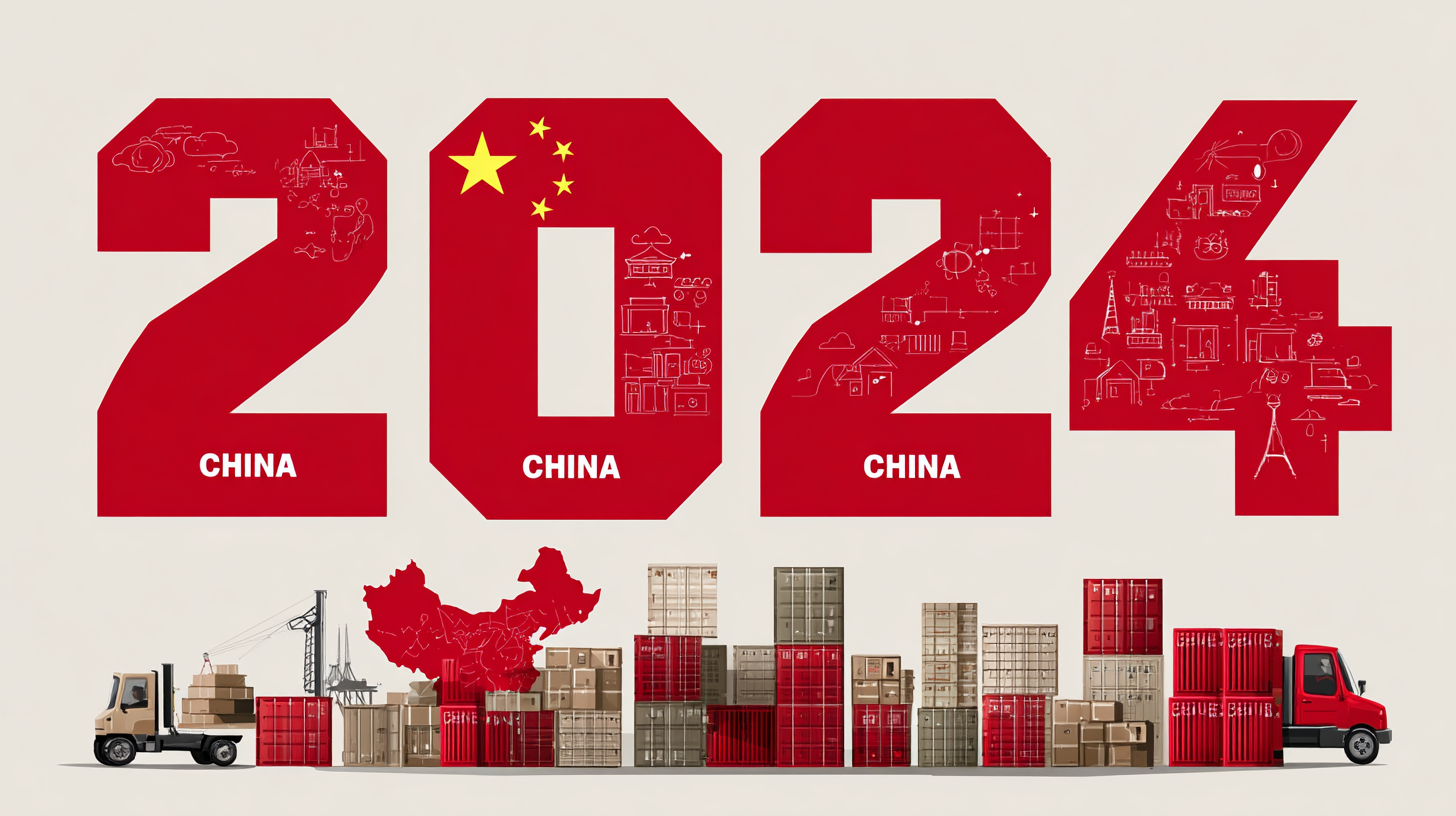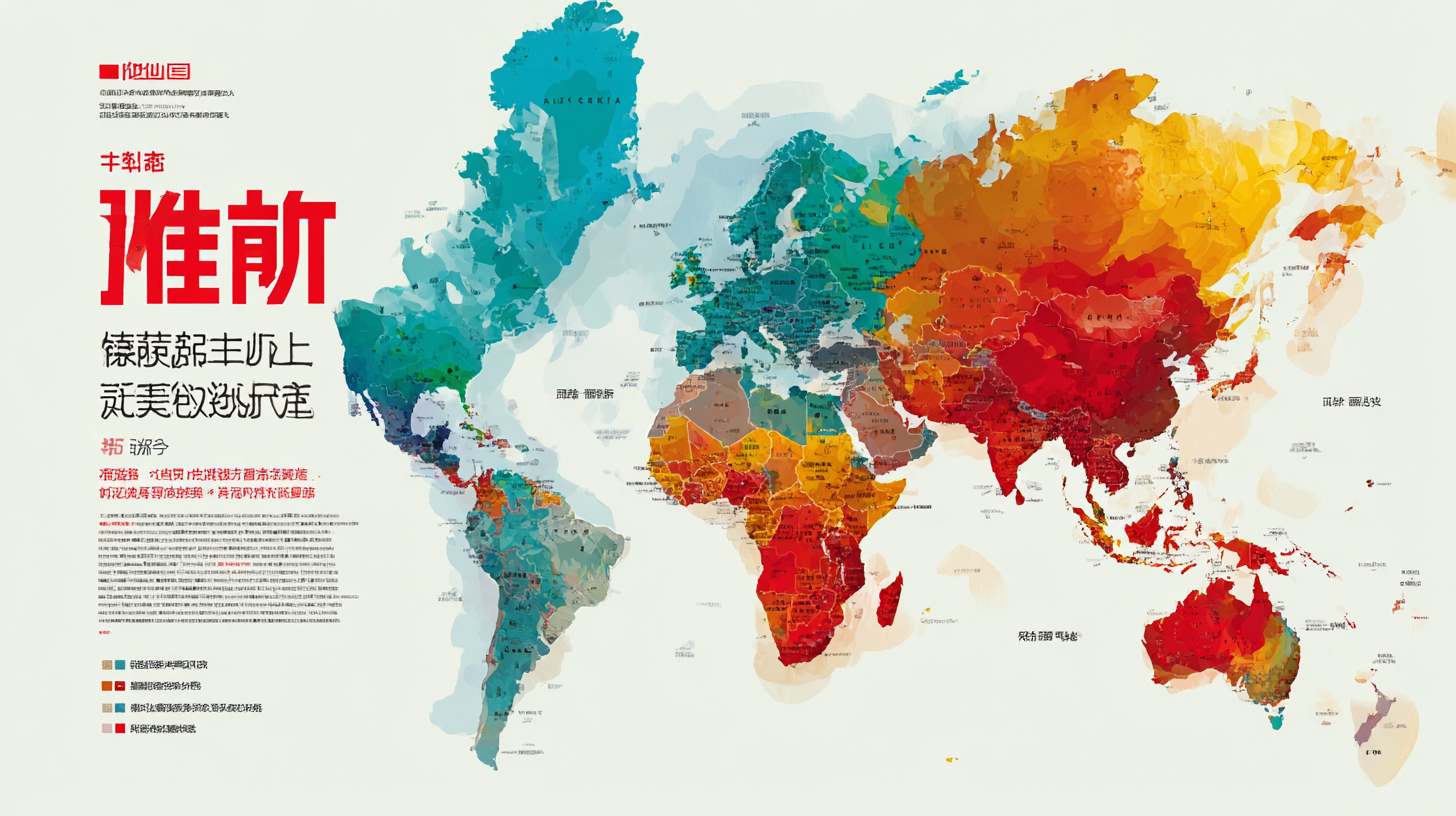- English
- русский
- العربية
- tiếng Việt
- Türkçe
- Deutsch
- 日本語
- 한국어
- ภาษาไทย
- Indonesia
- שפה עברית
- Português
- Español
- Français
- Italiano
- Nederlands
- Polski
- Svenska
- magyar
- Malay
- বাংলা ভাষার
- Dansk
- Suomi
- हिन्दी
- Pilipino
- Gaeilge
- تمل
- český
- ελληνικά
- український
- Javanese
- فارسی
- தமிழ்
- తెలుగు
- नेपाली
- Burmese
- български
- ລາວ
- Latine
- Қазақша
- Euskal
- Azərbaycan
- Slovenský jazyk
- Македонски
- Lietuvos
- Eesti Keel
- Română
- Slovenski
- मराठी
- Srpski језик

Unlocking 2025: 5 Game-Changing Trends for Best China Products in Global Sourcing
As we enter a transformative era in global sourcing, understanding the dynamics of China’s manufacturing landscape has never been more crucial. According to a recent report by McKinsey & Company, over 70% of businesses worldwide are increasing their reliance on Chinese suppliers due to competitive pricing and advanced production capabilities. The World Bank also notes that China's contribution to global trade has soared, accounting for 15% of total exports, a figure that underscores its pivotal role in the supply chain. In this context, businesses must stay ahead of the curve by identifying and leveraging the five game-changing trends that will define the best China products of 2025. This insight will not only help companies optimize their sourcing strategies but also unlock the full potential of innovation and efficiency that the Chinese market offers.

Emerging Technologies Revolutionizing Chinese Product Manufacturing
As we look towards 2025, the landscape of global sourcing is being dramatically reshaped by emerging technologies in Chinese product manufacturing. Innovations such as artificial intelligence (AI), robotics, and Internet of Things (IoT) are not just fostering efficiency but also enabling unprecedented levels of customization. According to a recent report by McKinsey, companies that leverage AI in manufacturing can reduce production costs by up to 20%, while enhancing product quality and responsiveness to market demands.

In this transformative era, it’s crucial for sourcing professionals to stay ahead of the curve. One effective strategy is to invest in technologies that facilitate smart manufacturing processes. For instance, utilizing IoT sensors can provide real-time data on production, leading to better inventory management and reduced waste. It’s also advisable to partner with Chinese manufacturers who are adopting these smart technologies, as they are more likely to deliver innovative and high-quality products.
Tip: Regularly attend industry conferences and webinars to remain informed about the latest technological advancements and best practices in sourcing from China. Engaging with experts can help identify potential partners who are leading the way in technology adoption.
Sustainable Practices as a Competitive Edge in Global Sourcing
In the evolving landscape of global sourcing, sustainable practices are increasingly becoming a competitive edge for businesses. The Engineering, Procurement, and Construction Management (EPCM) market is projected to witness substantial growth, estimated to reach $953.2 billion by 2032, up from $4.99 billion in 2024, reflecting a compound annual growth rate of 8.42%. This growth presents an opportunity for companies to align their sourcing strategies with sustainable practices that not only meet consumer demand but also adhere to regulatory standards.
Tips for integrating sustainability into your sourcing strategy: First, prioritize suppliers who demonstrate a commitment to eco-friendly practices. This includes certifications and eco-labels that verify their environmental impact. Second, leverage technology to enhance transparency in your supply chain; using sustainability tracking software can help monitor emissions and resource use. Finally, consider collaborating with partners to innovate and create sustainable solutions that can reduce costs and enhance your market positioning.
As industries, including fashion and tourism, pivot towards sustainability, understanding market dynamics becomes crucial. The sustainable tourism market alone is projected to grow at a compound annual growth rate of 22.25%, reaching $15.8 trillion by 2031. By adopting sustainable practices proactively, businesses can not only comply with ESG regulations but also create lasting value and differentiate themselves in an increasingly competitive marketplace.
Consumer Trends Shaping the Future of Chinese Exports
As we approach 2025, understanding the consumer trends shaping the future of Chinese exports is crucial for global sourcing strategies. One significant shift is the rising demand for sustainable and ethically produced products. With increased awareness of environmental issues, consumers are opting for products that reflect their values. Chinese manufacturers are responding by adopting greener practices and highlighting their commitment to sustainability, making their offerings more attractive in international markets.

Another pivotal trend is the growing influence of technology-driven consumer behavior. The rise of e-commerce and mobile shopping is reshaping how products are marketed and sold. Chinese brands are leveraging digital platforms to reach global consumers, employing data analytics to understand preferences and tailor offerings. Additionally, the integration of advanced technologies, such as AI and AR, is enhancing customer experiences, offering personalized and interactive shopping processes that resonate with tech-savvy consumers around the world. As these trends evolve, they will redefine the landscape of Chinese exports and set the stage for global sourcing strategies in 2025.
The Role of E-commerce Platforms in Global Distribution of Chinese Goods
As we move towards 2025, e-commerce platforms are increasingly pivotal in the global distribution of Chinese goods, reshaping international retail dynamics. E-commerce has already established itself as an integral component of the global marketplace, accounting for a significant portion of total retail sales. In 2023, e-commerce represented 19.4% of global retail sales, with projections suggesting it will rise to 22.6% by 2027. This growth is fueled largely by China's robust e-commerce sector, which saw air cargo expand by over 10% in the first quarter due to increased exports amid supply chain disruptions.
However, the landscape for Chinese e-commerce sellers is not without challenges. Recent U.S. tariffs aimed at curbing the trade deficit have introduced volatility, impacting both sellers and consumers. The rollercoaster nature of tariffs has made it difficult for suppliers to maintain competitive pricing while navigating these costs. Even as platforms expand their reach, like offering free global shipping to multiple countries, the long-term impact of regulatory changes remains uncertain. As we prepare for 2025, the role of e-commerce platforms in facilitating trade and distributing goods from China will be central to understanding future trends in global sourcing.
Unlocking 2025: 5 Game-Changing Trends for Best China Products in Global Sourcing
| Trend | Description | Impact on Global Sourcing | E-commerce Platform Role |
|---|---|---|---|
| Sustainability | Increased focus on sustainable products and practices. | Drives demand for eco-friendly sourcing options. | Platforms promote organic and sustainable goods. |
| Technology Integration | Use of AI and IoT in product development and logistics. | Enhances efficiency and reduces costs in sourcing. | E-commerce platforms utilize AI to optimize sales. |
| Customized Products | Growing demand for personalized and unique products. | Fosters diversified sourcing strategies. | Platforms facilitate custom orders and designs. |
| Fast Delivery | Expectations for quicker delivery times are increasing. | Compels suppliers to streamline their operations. | Platforms invest in logistics to enhance delivery speed. |
| Social Commerce | Integration of social media and e-commerce. | Expands reach and engagement with consumers. | Platforms leverage social networks to drive sales. |
Quality Assurance and Innovation Driving China's Global Market Success
As the global market continues to evolve, one core concept remains paramount: quality assurance. In 2025, China's commitment to maintaining high standards will be a crucial factor in its success in global sourcing. Chinese manufacturers are increasingly adopting rigorous quality control practices that not only meet but often exceed international benchmarks. By integrating advanced technologies and rigorous testing protocols, they are ensuring that their products consistently satisfy the diverse demands of global consumers.
Innovation is another driving force behind China's market success. The landscape of global sourcing is rapidly changing, and China's ability to adapt through continuous innovation sets it apart. From smart manufacturing processes to sustainable practices, Chinese companies are leveraging technology to enhance product offerings and streamline operations. This focus on innovation not only fosters competitiveness but also aligns with the growing consumer preference for cutting-edge, environmentally friendly products. As we look toward 2025, these trends will undoubtedly position China as a leader in the global market, transforming challenges into opportunities for growth and excellence.
